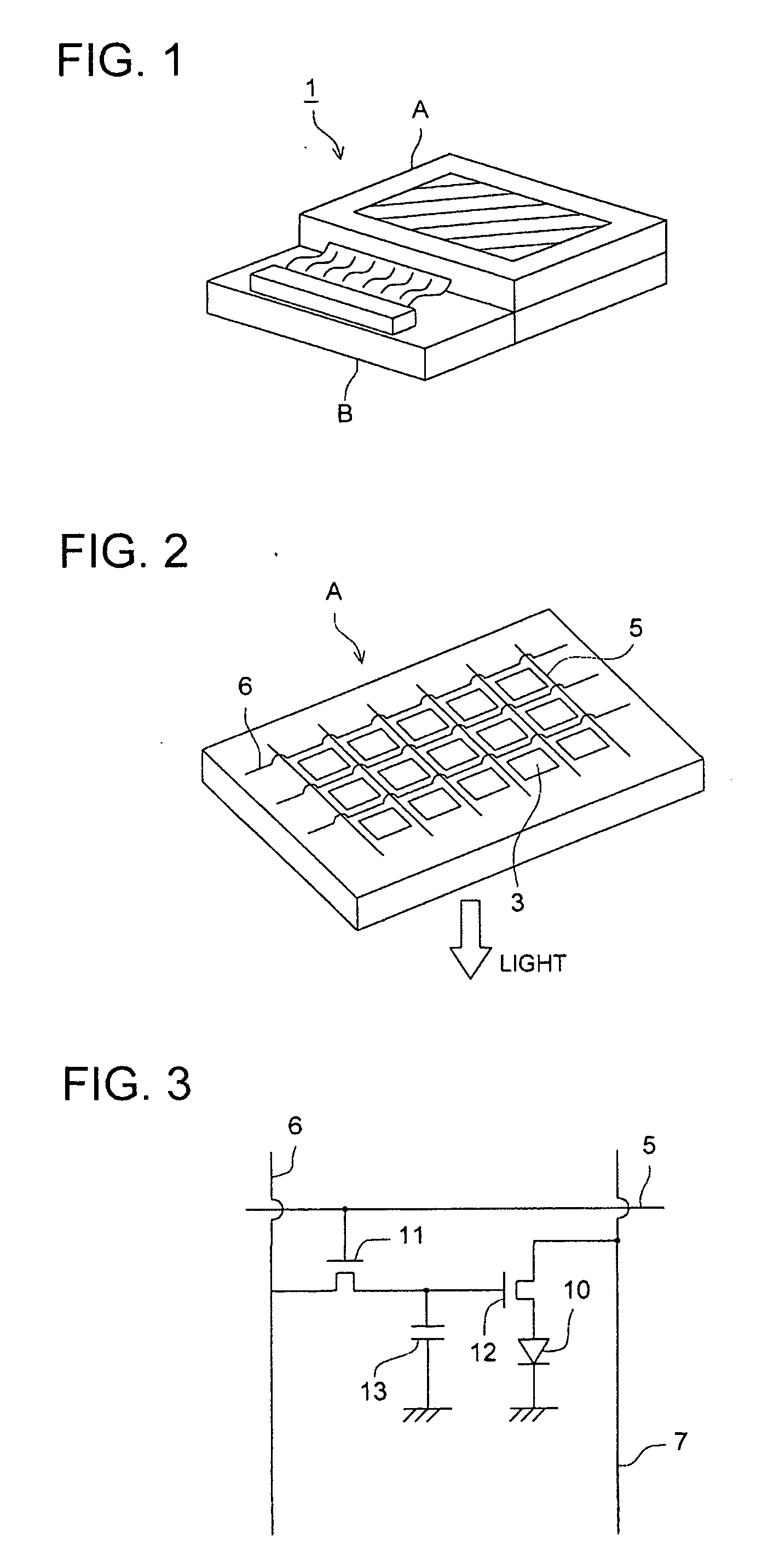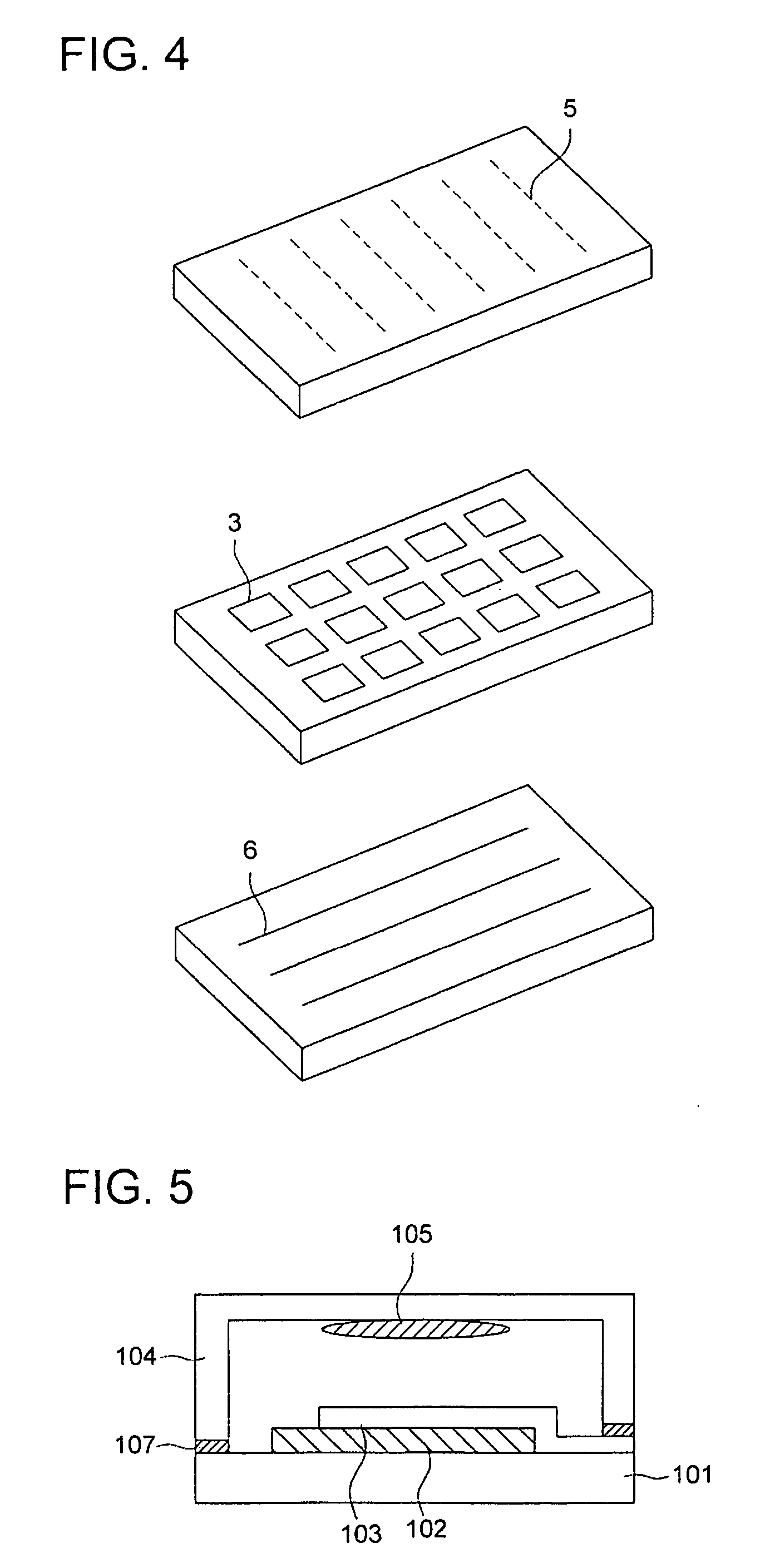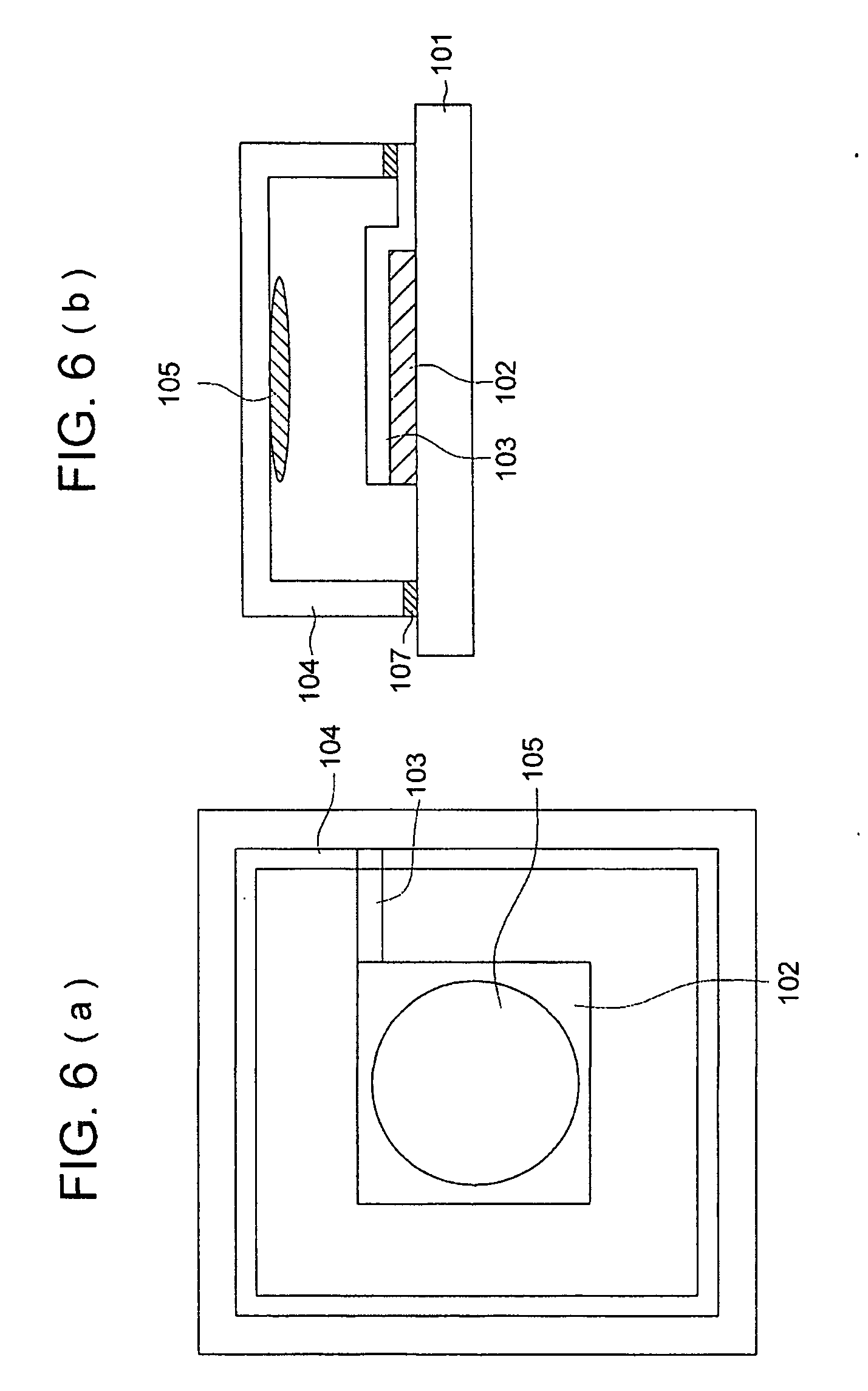Material for organic electroluminescence element, organic electroluminescence element, display device and illumination device
a technology of organic electroluminescence and material, which is applied in the direction of discharge tube luminescnet screens, natural mineral layered products, etc., can solve the problems of short emission life, short emission efficiency of excimer emission, and short emission life. achieve the effect of long emission life and high emission efficiency
- Summary
- Abstract
- Description
- Claims
- Application Information
AI Technical Summary
Benefits of technology
Problems solved by technology
Method used
Image
Examples
example 1
[0239] A pattern was formed on a substrate composed of a glass plate and a 150 nm ITO layer (NA45 manufactured by NH Technoglass Co., Ltd.) as an anode. Then the resulting transparent substrate having the ITO transparent electrode was subjected to ultrasonic washing in iso-propyl alcohol and dried with a dry nitrogen gas and subjected to UV-ozone cleaning for 5 minutes.
[0240] Thus obtained transparent substrate was fixed on a substrate holder of a vacuum deposition apparatus available on the market. On the other hand, in five resistive heating tantalum boats, α-NPD, CBP, Ir-10, BCP, and Alq3 were placed one by one, and fixed in the vacuum deposition apparatus (a first vacuum chamber).
[0241] Further, lithium fluoride was placed in a resistive heating tantalum boat, and aluminum was placed in a resistive heating molybdenum boat, and fixed in a second vacuum chamber.
[0242] After the pressure in the first vacuum chamber was reduced to 4×10−4 Pa, the boat carrying α-NPD was heated by ...
example 2
Preparation of Organic EL Elements OLED2-1 to 2-31
[0255] Organic EL Elements OLED2-1 to 2-31 were prepared in the same manner as in Example 1, except that the emission dopants and the emission hosts were changed as shown in Table 2.
[0256] The external quantum efficiency and the emission life of each of the obtained organic EL elements were measured in the same manner as in Example 1.
[0257] The external quantum efficiency and the emission life of each of the obtained organic EL elements were expressed as relative values when each of those values of Organic EL Element OLED2-1 was set to 100. The obtained results were summarized in Table 2.
TABLE 2Emis-ExternalEmis-ElementsionEmissionQuantumsionNo.HostDopantEfficiencyLifeRemarksOLED2-1CBPIr-1100100Comp.OLED2-2CBPComparative 29485Comp.OLED2-3CBPComparative 3102110Comp.OLED2-4CBPComparative 4100101Comp.OLED2-5CBPComparative 69898Comp.OLED2-6CBP1114177Inv.OLED2-7CBP4106125Inv.OLED2-8CBP5110135Inv.OLED2-9CBP6112168Inv.OLED2-10CBP711015...
example 3
Preparation of Organic EL Elements OLED3-1 to 3-24
[0260] Organic EL Elements OLED3-1 to 3-24 were prepared in the same manner as in Example 1, except that the emission dopants and the emission hosts were changed as shown in Table 3. The external quantum efficiency and the emission life of each of the obtained organic EL elements were measured in the same manner as in Example 1. The external quantum efficiency and the emission life of each of the obtained organic EL elements were expressed as relative values when each of those values of Organic EL Element OLED3-1 was set to 100. The obtained results were summarized in Table 3.
TABLE 3Emis-ExternalEmis-sionEmissionQuantumsionElement No.HostDopantEfficiencyLifeRemarksOLED3-1CBPIr-9100100Comp.OLED3-2CBPComparative 58391Comp.OLED3-3CBPComparative 79298Comp.OLED3-4CBPComparative 998100Comp.OLED3-5CBP23109136Inv.OLED3-6CBP24115144Inv.OLED3-7CBP26105137Inv.OLED3-8CBP28112149Inv.OLED3-9CBP31107132Inv.OLED3-10CBP34106134Inv.OLED3-11CBP54112...
PUM
| Property | Measurement | Unit |
|---|---|---|
| Angle | aaaaa | aaaaa |
| Electroluminescence | aaaaa | aaaaa |
| Luminous efficiency | aaaaa | aaaaa |
Abstract
Description
Claims
Application Information
 Login to View More
Login to View More - R&D
- Intellectual Property
- Life Sciences
- Materials
- Tech Scout
- Unparalleled Data Quality
- Higher Quality Content
- 60% Fewer Hallucinations
Browse by: Latest US Patents, China's latest patents, Technical Efficacy Thesaurus, Application Domain, Technology Topic, Popular Technical Reports.
© 2025 PatSnap. All rights reserved.Legal|Privacy policy|Modern Slavery Act Transparency Statement|Sitemap|About US| Contact US: help@patsnap.com



